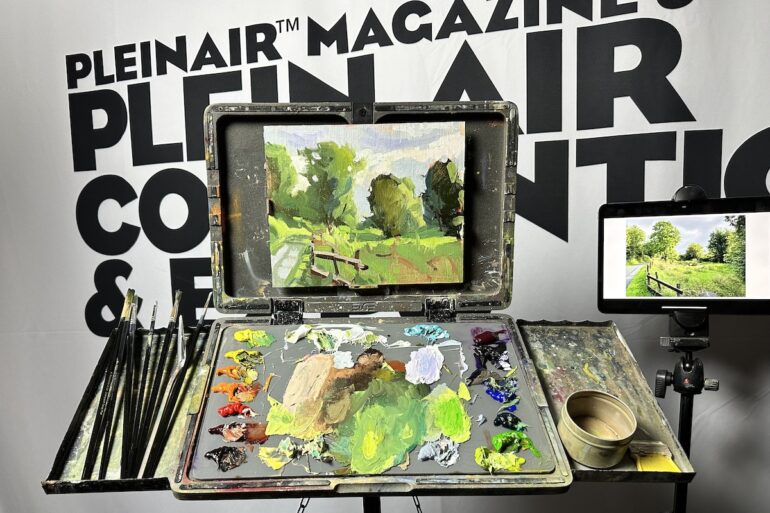
This post is also available in:

It kicked off, the pre-convention session of the 10th Plein Air Convention and Expo (FACE): “the Woodstock of plein air painting,” as defined by Eric Rhoads and his team, Streamline Publishing.
Protagonist of the entire day, with both theoretical and practical sessions, was Lori Putnam who addressed the central theme of plein air painting, that of light, entitled: “The Light Changed” with which she highlighted the potential of light and its sudden changes.
“In plein air painting every minute has its own color,” said the artist, who through demonstration slides of some of her compositions reviewed the different types of light, including: side light, back light, front light and top light, specifying for each how the direction of light affects the composition.
In fact, depending on where the light source is located, compositional elements change both color temperature and shadows, natural and cast shadow. Colors in particular tend to absorb the temperature of the light, becoming lighter in areas exposed to the light and darker when placed farther away from the source. On the type of light depends both the effect it has on color contrasts, the edges and the intensity that represents the narrative thread that the artist decides to follow in a straight manner, once identified.
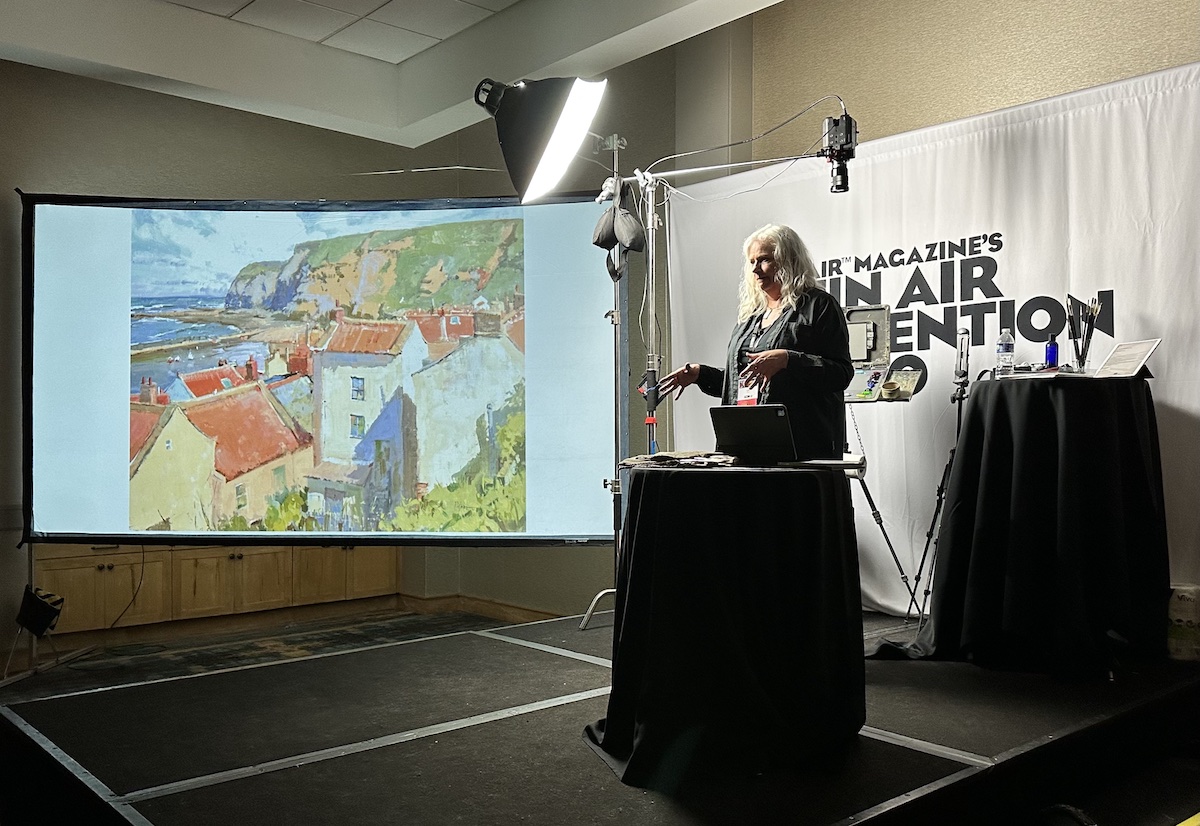
In the complex interplay of light, each element undergoes significant variations as brightness changes, both in terms of color temperature and tonal values. Elements this latter from which Putnam starts in creating the compositional structure about which she stated that: “If a composition does not work in black and white, it will never work with colors.”
To create an effective composition Putnam recommended thumbnails and quick compositional sketches made on the spot, which, in addition to the “good notes” collected during plein air sessions serve as a reference for the creation of larger compositions, which the artist makes in the studio by orchestrating all the material collected.
A characteristic of plein air sessions -which will be amply demonstrated during outdoor sessions in the coming days- is the speed of execution that this type of painting requires since, in capturing compositional elements, light varies much more abruptly than the human eye can capture individual, minute variations.
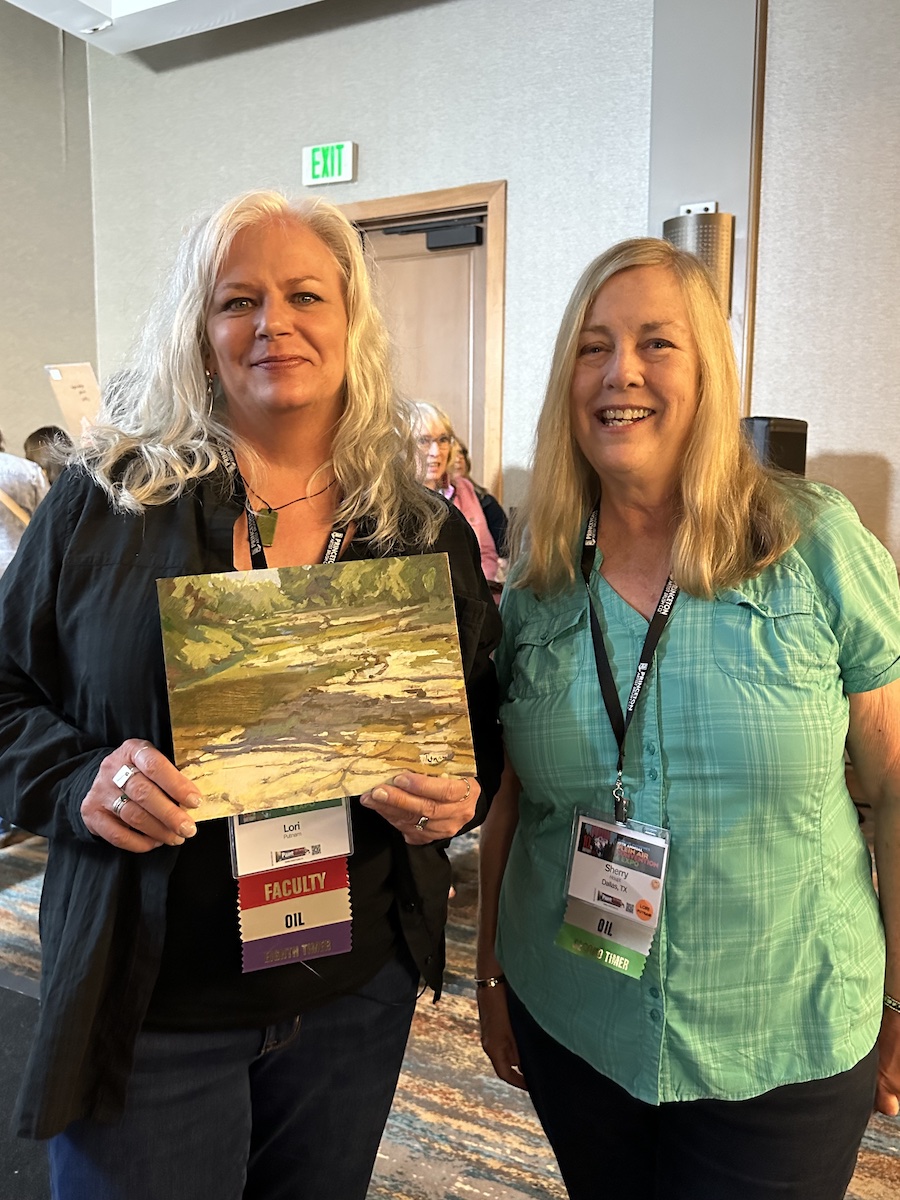
Putnam argues that colors are a matter of personal perception and their use is motivated by individual choice. If for studio work she uses a color palette consisting of: Cadmium Yellow Lemon, Cadmium Yellow Medium, Cadmium Yellow India, Cadmium Orange, Naphthol Red, Rose Brown, Asphalt, Quinacridone, Magenta, Dioxin Purple, Ultramarine Blue, Cobalt Blue, Phthalo Green, Permanent Green, Cadmium Green Light, Portland Gray, Radiant Turquoise, and Titanium White, all produced by Gambling; for quick plein air compositions it is limited to a palette consisting of only four colors: Yellow, Ultramarine Blue, Napthol Red and White, from whose combinations she manages to compose a varied palette.
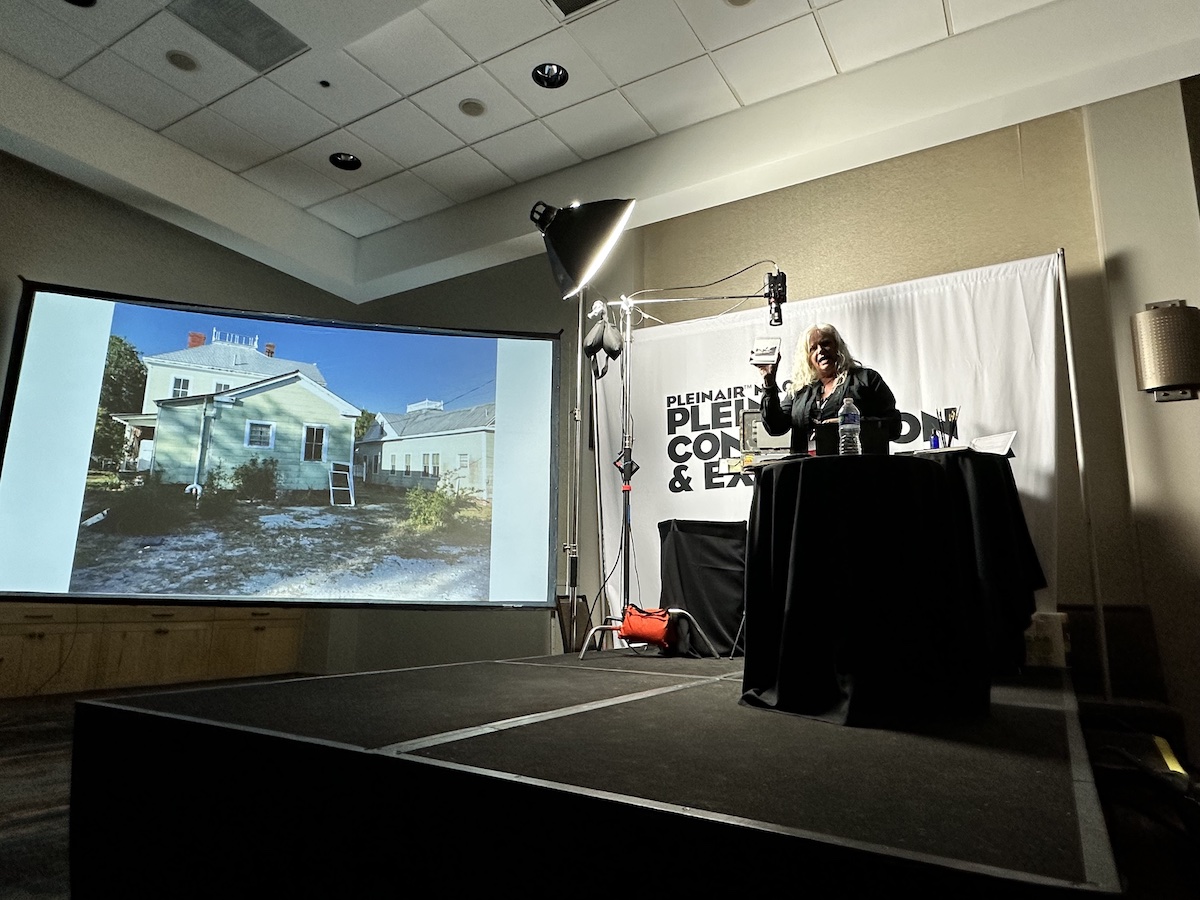
Putnam reiterated how talking about plein air means first of all distinguishing lights from shadows by looking for following the compositional drafting, the relationships between the parts: a fundamental element for the compositional harmony to which Putnam approaches from the darkest to the lightest colors, from large shapes to details, which, with sarcasm, referring to their definition in the rapid plein air compositions, she qualifies details as: “matter for divorce lawyers,” arousing hilarity from the participants.
The only exception is the realization of the sky, which she composes starting with the lightest colors and ending with the darkest colors.
Like all artistic disciplines, plein air painting requires dedication and strength of spirit: it is therefore necessary to abandon all negative thoughts and preconceptions provided by the historical memory of the human brain in order to let go of the creative flow that inhabits the artist, considered by Lori Putnam as: “a sensitive people,” because of his own introverted and sensitive nature.
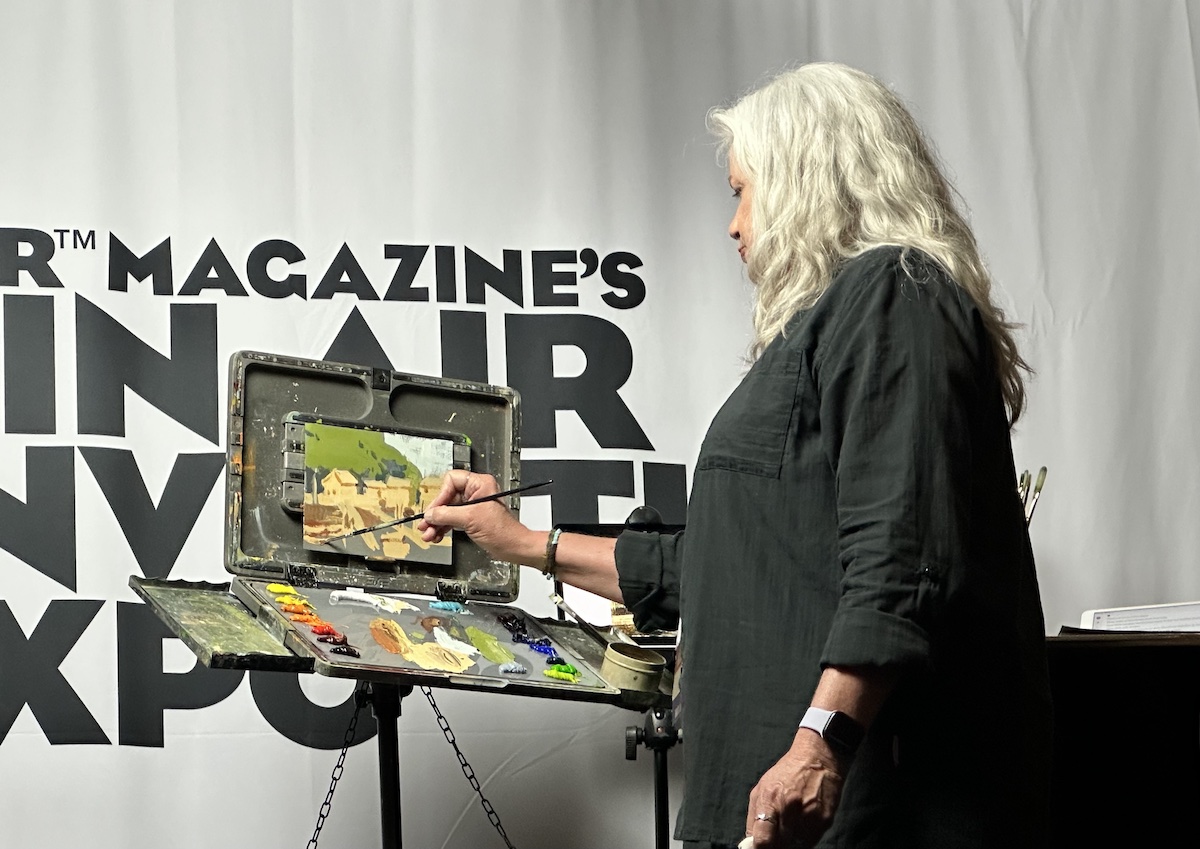
In the afternoon demonstration session she made three quick compositions: in the first two she worked from the middle toned values -given by the use of a gray toned paper that serves as a middle value- taking into consideration the appearance between the parts. A process she approached differently for the third composition in which she started with an underpainting on a white panel. For all color that uses a white surface as a starting point, Putnam suggested simplifying the process by helping herself with the “view catcher”: a small tool with a small circular aperture that helps to see color values accurately even on white surfaces.
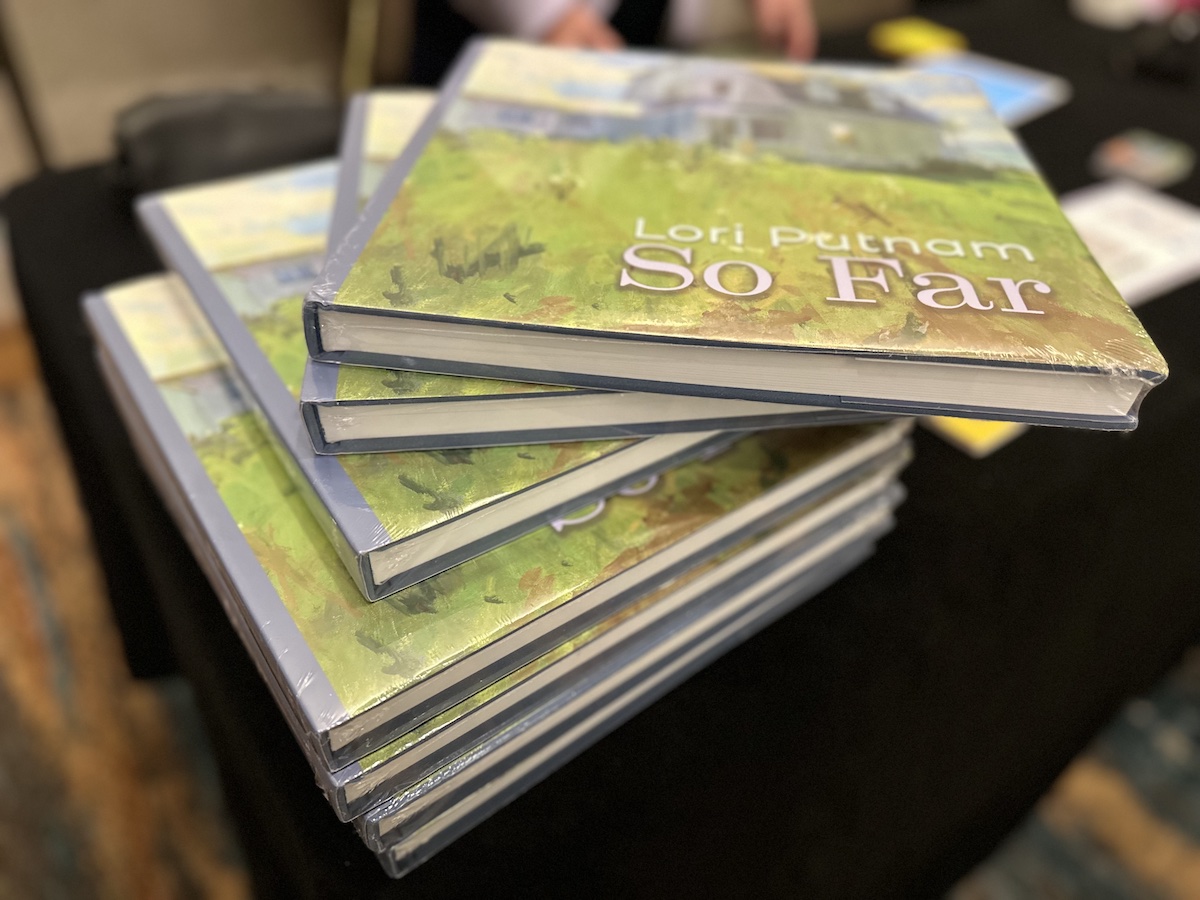
In conclusion, the artist reiterated the importance of keeping personal pressure and anxiety out of the compositional process and going straight to the set point, which must never be lost sight of:” Try to do your best because your best is good enough, so no pressure and no expectations,” said the artist who has recently published a new book entitled: “So Far,” with an introduction by Jean Stern, Quang-Ho and Scott Christensen, her mentors and teachers. Lori Putnam will again be featured in another demonstration session scheduled for tomorrow that will be concurrent with the Basics Course taught by: Carrie Curran, Bruce A.Gomez, Judd Mercer, Barbara Tapp and John Taft.
Given the multiplicity of parallel events Miami Niche, as indeed every artist does, is obliged to make choices so we apologize in advance if we will not be able to cover all the events going on during this crazy week under the banner of painting in Plein Air.
(on the title: A frame from the final demo starting from a white panel board)

Thank you for this!
You are more then welcome! Ciao dear Lori😘